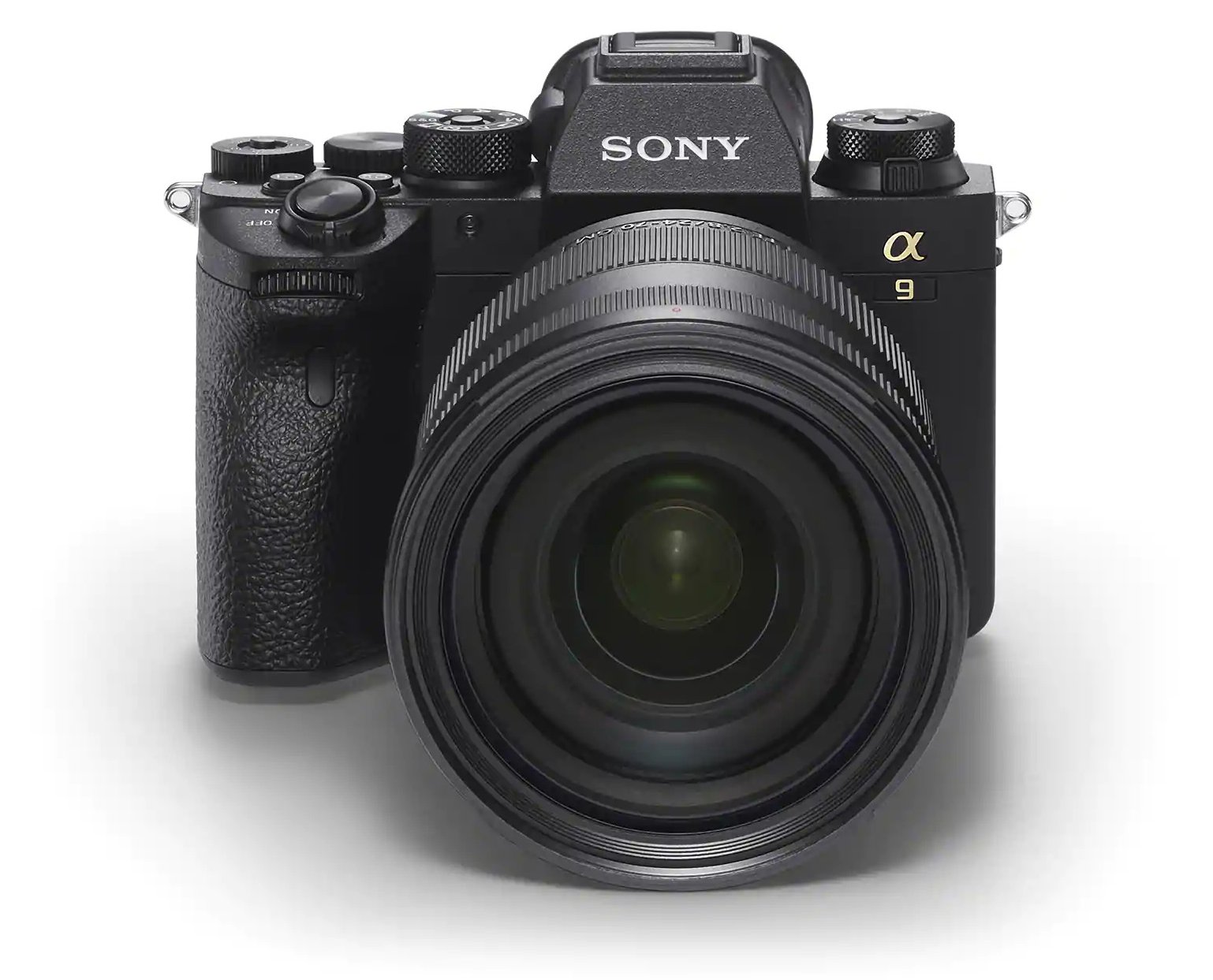

While reading the reaction to our coverage of the Sony a9 II announcement yesterday, one comment really stuck out to me as an excellent summation of a subject that’s been buzzing around my mind for about a month now: “Sony reaching the edge of feasible. Now they don’t know what to add anymore.”

I agree with the sentiment, though I think it’s less about “not knowing what to add” and more of them just not being able to meet the insanely high bar they set for themselves starting with the a7R II. Going back in time to that camera, that was when I first started to believe that there was something special about Sony’s approach to imaging.
Now, several years and multiple camera iterations later, it’s hard to argue that Sony cameras aren’t the best overall imaging devices you can buy. I don’t mean to dismiss Canon, Nikon, Panasonic or Olympus, but the other major manufacturers just don’t seem to hit quite as many high notes, nearly as consistently, as Sony has been able to do for the past three or so years.

With the announcement of the original a9, Sony one-upped their own technology and expectations so much that it felt like they just wanted to put as much room between their camera technology and competitors as possible. And for the last few camera releases prior to 2019, I kept thinking that this kind of rapid, leaps-and-bounds superior technology release schedule simply couldn’t last forever.
And yet it felt like it did.
In addition to releasing cameras at a faster pace than anyone had ever attempted before, those cameras all had new features that legitimately made their predecessors feel outdated. At first, this felt bad to Sony users. I remember many of them lamenting to me that Sony was moving too fast, and that they felt the need to upgrade cameras more frequently than they would update their cell phones. That kind of cycle felt unsustainable for the consumer.

Eventually, though, I stopped hearing this. After the a7 III came out, not only did I feel like current Sony owners were much more willing to buy the latest and greatest than before, I saw die-hard Nikon and Canon shooters jump ship as well. That camera’s release last year really did feel like a huge turning point for Sony: they weren’t just the best mirrorless manufacturer on the market, they had become the best camera maker on the market, period.
Even when the a6400 was released—a camera I wasn’t particularly excited about, but admit has its place in the market—there was still an intriguing new piece of technology that felt remarkable: real time object tracking. Even though the camera itself felt largely “meh” in terms of raw hardware, this new software got me excited because of what Sony could do with it in their full-frame cameras.
That excitement was realized with the release of the Sony a7R IV and the recent firmware update released for the Sony a9.
The a6400 is the last camera from Sony that I really felt was continuing to at least meet the high bar of innovation that Sony had set for themselves, and even it barely reached that point. Since then, Sony has released three cameras that they or the industry has labelled flagships: the a6600, the a7R IV, and now the a9 II.

When you look at all three of these cameras, one thing is clear: none of them really match that high standard of innovation. The closest is the a7R IV thanks to that new sensor, but as I’ve mentioned previously, the overall appeal of the a7R IV doesn’t really outweigh the continued value of the previous generation camera.
The a6600 launched in the crowded space comprised of the a6400, a6500, and a6100, and the overlap in features among these three models is both confusing and convoluted. The a6500 absolutely needed a refresh, and the a6600 offers that, but not in a way that felt monumentally innovative the way Sony has done in the past.
In that same vein, the a9 II is just barely an improvement over the a9. It features some really nice changes, but they’re small nice changes. The definition of incremental.
So, if you’re like me, you start to wonder: is Sony reaching the edge of what’s possible? Or at least, are they reaching the edge of what is possible without compromising one of their five fundamentals: compact?
Earlier this year, Sony announced the RX100 VII, another incremental update of its popular point-and-shoot line. The camera had a few nifty new features, like unlimited record time in 4K and pretty darn good battery life, but one feature that felt really out of place on the tiny point and shoot: 90fps burst shooting. Though it locks AF and only gives you seven still shots per burst, the camera is firing at a remarkable rate of 90 frames per second. That’s wild. And the buffer even clears pretty quick. Though the feature takes some getting used to, the idea was incredibly impressive to those who look to the RX line as an exhibition of Sony’s latest imaging technology.
If you want to find out how this feature works, Ted Forbes explains it quite well in the video below:
When we saw this feature on the RX100 a month ago, several of us were extremely excited to see the technology added to the (at the time) rumored a9 II. It felt like a perfect fit for a camera whose express purpose is to capture action faster than any other camera on the market. We were giddy at the possibilities, and anticipating other neat technological feats with which Sony would no-doubt surprise us.
Fast forward to October 3rd, and the a9 II was considerably less impressive or innovative than we expected. Is it still arguably the best sports camera on the market? Oh, of course. For the last two years, I’ve said that the a9 is the best overall camera anyone can buy right now, from any manufacturer. The a9 II improves, though only a bit, on that already outstanding product.
But does it make the previous generation camera obsolete?
The a6600 gets a bit of a pass here because it does indeed make the previous generation camera, the a6500, a thing of the past. I believe it’s actually discontinued now. But that camera line was so desperate for a refresh, pretty much anything Sony released would fit the bill. But the other two flagship cameras from Sony do not, in my opinion, distinguish themselves enough to make the previous generations any less desirable. Arguably, they make the prior generation cameras feel like a better buy, given the expected price cuts and recent firmware updates.
I think the advancements between the a7R III and the a7R IV, and the a9 and the a9 II, are definitely noteworthy, and specific types of photographers will probably love and benefit from those changes. The a9 II now competes even more aggressively in the professional sports camera market, giving Nikon and Canon a real run for their money when it comes to high-end sports photography, like the Olympics.
But I’m still worried. The changes, especially those made to the a9 II, are minor in the sense that they aren’t offering photographers something new and exciting that competitor’s products don’t. If anything, the focus on connectivity, better weather sealing and a better ergonomics feel like features that should have existed in the first generation camera, not features we should be celebrating in a model released two years later.

Look, I honestly have no problem with the a9 II. While the update from generation one to generation two doesn’t really offer any new functionality not already found on the market, the generation one product already dramatically outshone what Canon or Nikon were able to do with autofocus, continuous shooting speed, and silent shooting capability. Blackout free 20fps photography is honestly one of the most incredible technological feats in imaging I’ve ever (and I really do mean ever) had the pleasure of experiencing. I love the stuff that’s been added because it makes the camera more whole, and better suited to perform duties befitting a high end sports shooting camera.
But I think that the ridiculously high-bar that Sony has managed to hit or exceed for years on end is finally so high that even they can’t consistently hit it anymore. In a sense, this is good news: the only reason we’re disappointed is because Sony has set us up to expect a minimum level of innovation. But now we’re let down when they don’t hit that mark, and that is a new feeling for Sony faithful.
I am not willing to speculate on why these updates are so incremental, or why we still haven’t seen the a7S line refreshed (a conversation along the same lines). That’s a topic for another day. But looking at the latest products from Sony makes me think that I either need to seriously curb my expectations, or Sony needs to “re-train” its users to wait longer between iterations, so that they can provide the “wow” factor we’ve come to expect.
![]()
read more at https://petapixel.com by Jaron Schneider
Photography
















